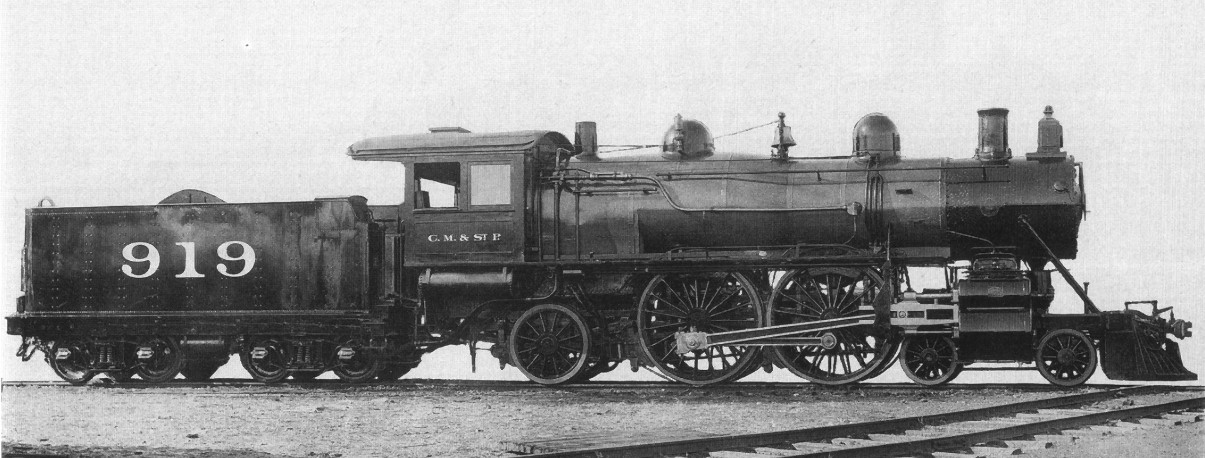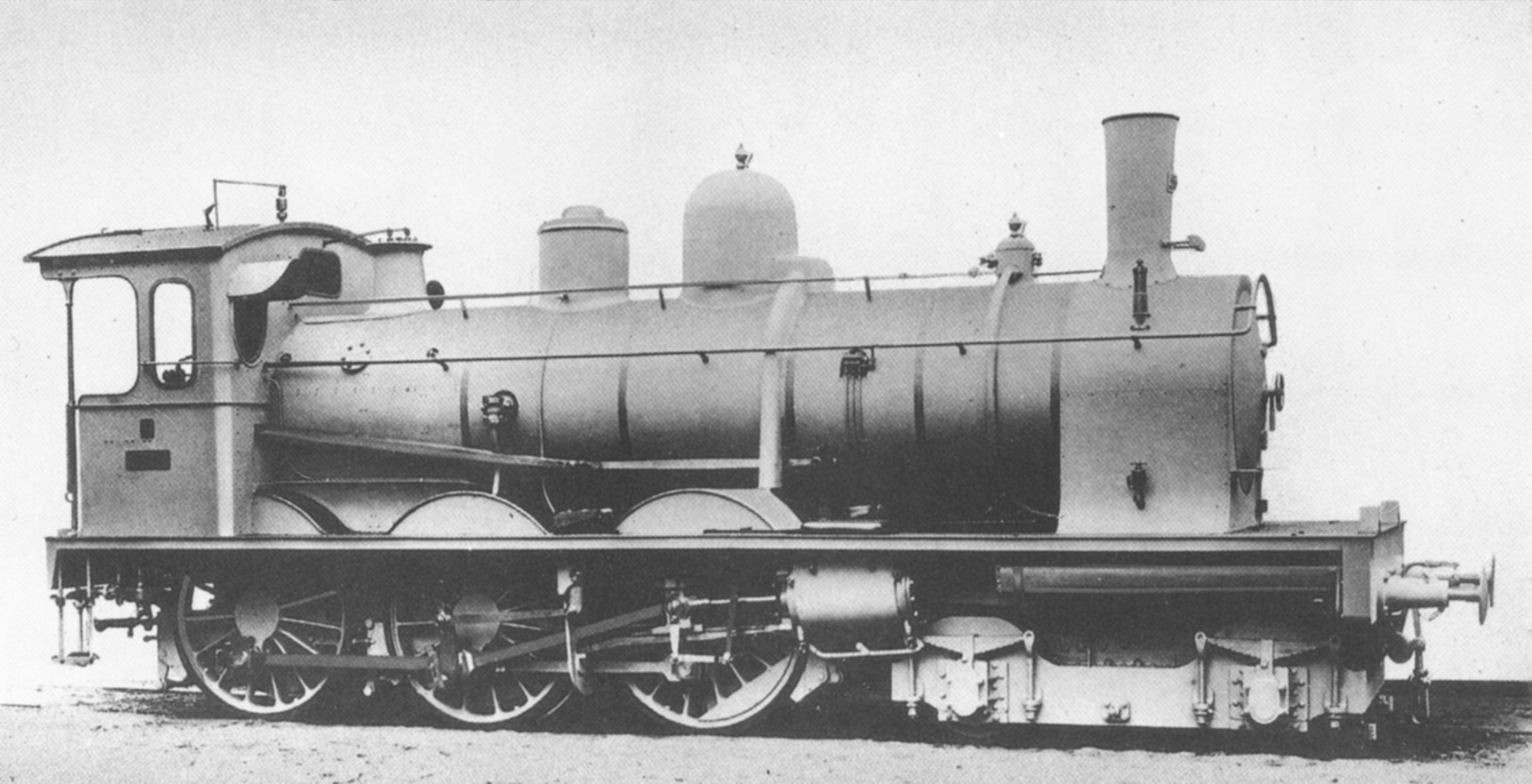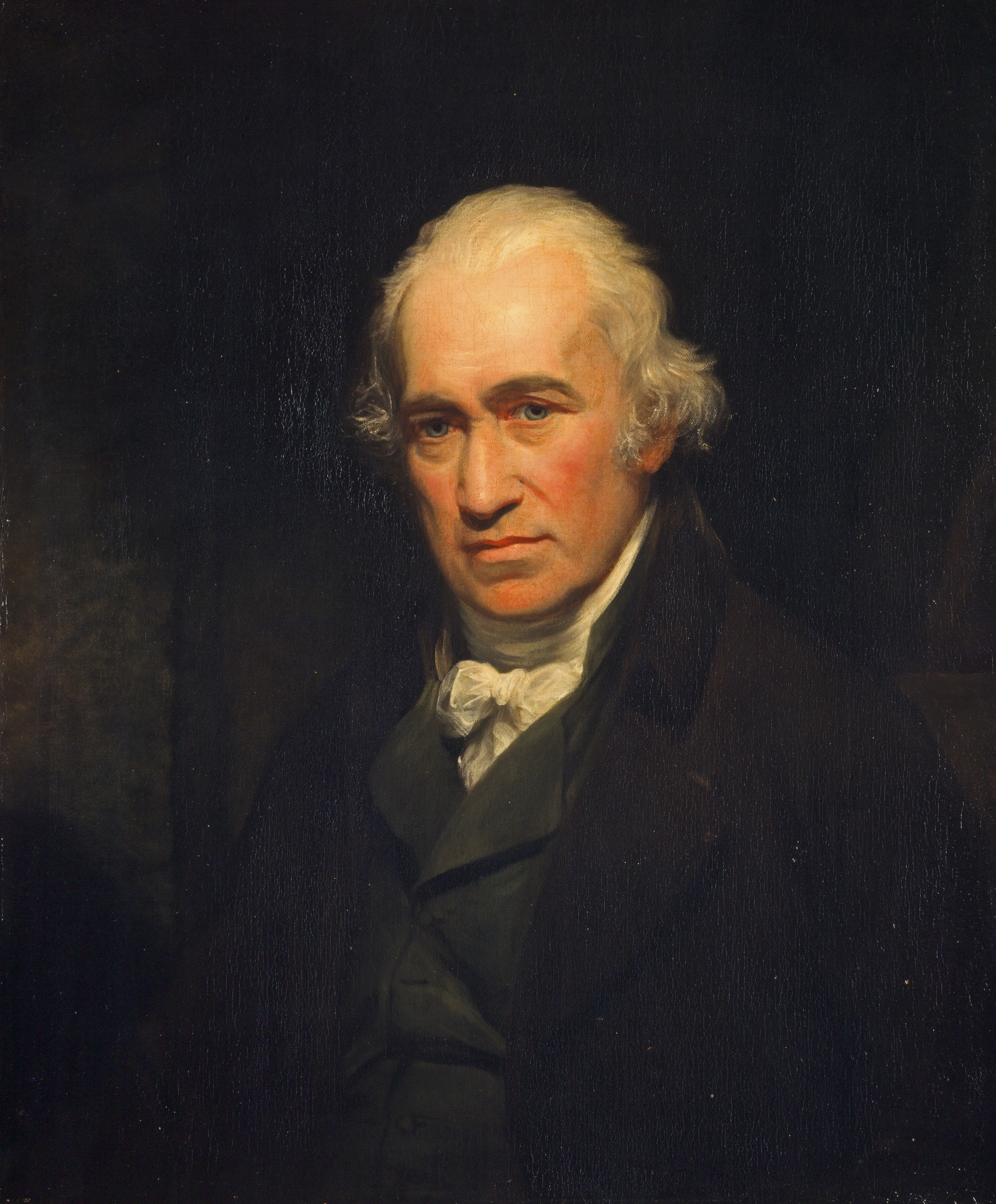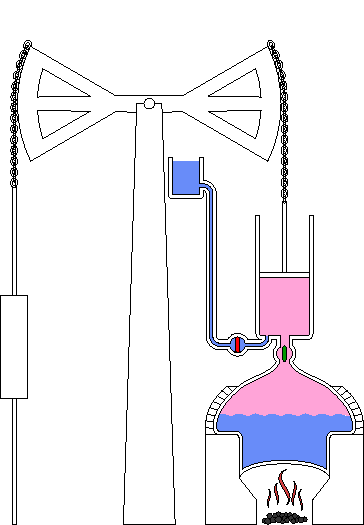|
Compound Locomotive
A compound locomotive is a steam locomotive which is powered by a compound steam engine, compound engine, a type of steam engine where steam is expanded in two or more stages. The locomotive was only one application of compounding. Two and three stages were used in ships, for example. Compounding became popular for railway locomotives from the early 1880s and by the 1890s were becoming common. Large numbers were constructed, mostly two- and four-cylinder compounds, in Germany, Austria, Hungary, and the United States. It declined in popularity due to a perceived increased maintenance requirement. Nonetheless, compound Mallets were built by the Norfolk and Western Railway up to 1952 and more importantly, Compound locomotives continued to be designed and built in France until the end of steam in the 1970's. French compounding of railway engines became so highly developed, eventually incorporating reheaters between the high and low pressure stages as well as the initial use of superh ... [...More Info...] [...Related Items...] OR: [Wikipedia] [Google] [Baidu] |
Steam Locomotive
A steam locomotive is a locomotive that provides the force to move itself and other vehicles by means of the expansion of steam. It is fuelled by burning combustible material (usually coal, Fuel oil, oil or, rarely, Wood fuel, wood) to heat water in the locomotive's Boiler (power generation), boiler to the point where it becomes gaseous and its volume increases 1,700 times. Functionally, it is a steam engine on wheels. In most locomotives, the steam is admitted alternately to each end of its Steam locomotive components, cylinders in which pistons are mechanically connected to the locomotive's main wheels. Fuel and water supplies are usually carried with the locomotive, either on the locomotive itself or in a Tender (rail), tender coupled to it. #Variations, Variations in this general design include electrically powered boilers, turbines in place of pistons, and using steam generated externally. Steam locomotives were first developed in the United Kingdom of Great Britain an ... [...More Info...] [...Related Items...] OR: [Wikipedia] [Google] [Baidu] |
Samuel Waite Johnson
Samuel Waite Johnson (14 October 1831 – 14 January 1912) was an English railway engineer, and was Chief Mechanical Engineer (CME) of the Midland Railway from 1873 to 1903. He was born in Bramley, Yorkshire and educated at Leeds Grammar School. Career Johnson learned to become an engineer at the locomotive builders E.B.Wilson and Company. In 1859 Johnson became Acting Locomotive Superintendent at the Manchester, Sheffield and Lincolnshire Railway. In 1864 he was appointed Locomotive Superintendent of the Edinburgh and Glasgow Railway. In 1866, after only two years in Scotland he replaced Robert Sinclair of the Great Eastern Railway (GER) at Stratford Works. There he stayed for seven years until moving to the Midland Railway (MR) at Derby, where he stayed until his retirement in 1904. At the time of appointment to the Midland Railway on 1 July 1873, he was paid a salary of £2,000 per year (), rising to £3,500 in 1896 () where it remained until his retirement on 3 ... [...More Info...] [...Related Items...] OR: [Wikipedia] [Google] [Baidu] |
Compound Locomotive
A compound locomotive is a steam locomotive which is powered by a compound steam engine, compound engine, a type of steam engine where steam is expanded in two or more stages. The locomotive was only one application of compounding. Two and three stages were used in ships, for example. Compounding became popular for railway locomotives from the early 1880s and by the 1890s were becoming common. Large numbers were constructed, mostly two- and four-cylinder compounds, in Germany, Austria, Hungary, and the United States. It declined in popularity due to a perceived increased maintenance requirement. Nonetheless, compound Mallets were built by the Norfolk and Western Railway up to 1952 and more importantly, Compound locomotives continued to be designed and built in France until the end of steam in the 1970's. French compounding of railway engines became so highly developed, eventually incorporating reheaters between the high and low pressure stages as well as the initial use of superh ... [...More Info...] [...Related Items...] OR: [Wikipedia] [Google] [Baidu] |
Eastern Counties Railway
The Eastern Counties Railway (ECR) was an English railway company incorporated in 1836 intended to link London with Ipswich via Colchester, and then extend to Norwich and Yarmouth. Construction began in 1837 on the first at the London end. Construction was beset by engineering and other problems, leading to severe financial difficulties. As a result, the project was truncated at Colchester in 1843 but through a series of acquisitions (including the Eastern Union Railway who completed the link between Colchester and Norwich) and opening of other lines, the ECR became the largest of the East Anglian railways. In 1862 ECR was merged with a number of other companies to form the Great Eastern Railway. Opening In 1835, a surveyor called Henry Sayer presented a plan for a new railway from London to York via Cambridge to London solicitors Dimes & Boyman. Together with John Clinton Robertson who was to become the first secretary of the ECR and engineers John Braithwaite it was concl ... [...More Info...] [...Related Items...] OR: [Wikipedia] [Google] [Baidu] |
James Samuel
James Samuel (21 March 1824 – 25 May 1874) was a railway engineer who was born in Glasgow on 21 March 1824. He was appointed engineer to the Eastern Counties Railway in 1846. He held two important patents but, in both cases, the invention was the work of another. Career He became engineer to the Eastern Counties Railway in 1846. He was a supporter of light railway vehicles and collaborated with William Bridges Adams on these. He designed a pair of light 2-2-0 locomotives for the Morayshire Railway. These were built by Neilson and Company for the opening of the line in August 1852. They were not a great success. From 1858 he worked on civil engineering projects in Asia Minor, the US and Mexico. Innovations In 1850 James Samuel lodged patent 13029 for a form of locomotive compounding, giving "continuous expansion" using two cylinders of equal diameter, a system devised by John Nicholson, a driver on the Eastern Counties Railway. Two locomotives were built using this system— ... [...More Info...] [...Related Items...] OR: [Wikipedia] [Google] [Baidu] |
Patent
A patent is a type of intellectual property that gives its owner the legal right to exclude others from making, using, or selling an invention for a limited period of time in exchange for publishing an sufficiency of disclosure, enabling disclosure of the invention."A patent is not the grant of a right to make or use or sell. It does not, directly or indirectly, imply any such right. It grants only the right to exclude others. The supposition that a right to make is created by the patent grant is obviously inconsistent with the established distinctions between generic and specific patents, and with the well-known fact that a very considerable portion of the patents granted are in a field covered by a former relatively generic or basic patent, are tributary to such earlier patent, and cannot be practiced unless by license thereunder." – ''Herman v. Youngstown Car Mfg. Co.'', 191 F. 579, 584–85, 112 CCA 185 (6th Cir. 1911) In most countries, patent rights fall under private la ... [...More Info...] [...Related Items...] OR: [Wikipedia] [Google] [Baidu] |
Arthur Woolf
Arthur Woolf (1766, Camborne, Cornwall – 16 October 1837, Guernsey) was a Cornish engineer, most famous for inventing a high-pressure compound steam engine. In this way he made an outstanding contribution to the development and perfection of the Cornish engine. Woolf left Cornwall in 1785 to work for Joseph Bramah's engineering works in London. He worked there and at other firms as an engineer and engine builder until 1811 experimenting with high pressure steam and a much improved boiler. He then returned to Cornwall. Michael Loam, who introduced the man engine to the UK, was trained by him. When he returned to Cornwall, beam engine designs were crude, shackled by outdated Watt patents and poor engineering, struggling to compete with large water wheels, even used underground. He learned from Bramah that to move forward meant adopting much improved engineering techniques, for it was Bramah who invented quality control. Woolf was chief engineer to Harvey & Co of Hayle, ... [...More Info...] [...Related Items...] OR: [Wikipedia] [Google] [Baidu] |
James Watt
James Watt (; 30 January 1736 (19 January 1736 OS) – 25 August 1819) was a Scottish inventor, mechanical engineer, and chemist who improved on Thomas Newcomen's 1712 Newcomen steam engine with his Watt steam engine in 1776, which was fundamental to the changes brought by the Industrial Revolution in both his native Great Britain and the rest of the world. While working as an instrument maker at the University of Glasgow, Watt became interested in the technology of steam engines. At the time engineers such as John Smeaton were aware of the inefficiencies of Newcomen's engine and aimed to improve it. Watt's insight was to realise that contemporary engine designs wasted a great deal of energy by repeatedly cooling and reheating the cylinder. Watt introduced a design enhancement, the separate condenser, which avoided this waste of energy and radically improved the power, efficiency, and cost-effectiveness of steam engines. Eventually, he adapted his engine to produce rot ... [...More Info...] [...Related Items...] OR: [Wikipedia] [Google] [Baidu] |
Beam Engine
A beam engine is a type of steam engine where a pivoted overhead Beam (structure), beam is used to apply the force from a vertical piston to a vertical connecting rod. This configuration, with the engine directly driving a pump, was first used by Thomas Newcomen around 1705 to remove water from mines in Cornwall. The efficiency of the engines was improved by engineers including James Watt, who added a separate Condenser (heat transfer), condenser; Jonathan Hornblower and Arthur Woolf, who Compound steam engine, compounded the cylinders; and William McNaught (Glasgow), William McNaught, who devised a method of compounding an existing engine. Beam engines were first used to pump water out of mines or into canals but could be used to pump water to supplement the flow for a waterwheel powering a watermill, mill. The rotative beam engine is a later design of beam engine where the connecting rod drives a flywheel by means of a Crank (mechanism), crank (or, historically, by means of ... [...More Info...] [...Related Items...] OR: [Wikipedia] [Google] [Baidu] |
Thomas Newcomen
Thomas Newcomen (; February 1664 – 5 August 1729) was an English inventor, creator of the Newcomen atmospheric engine, atmospheric engine in 1712, Baptist lay preacher, preacher by calling and ironmonger by trade. He was born in Dartmouth, Devon, Dartmouth, in Devon, England, to a merchant family and baptized at St. Saviour's Church on 28 February 1664. In those days, flooding in coal and tin mines was a major problem. Newcomen was soon engaged in trying to improve ways to pump out the water from such mines. His ironmonger's business specialised in designing, manufacturing and selling tools for the mining industry. Religious life Thomas Newcomen was a lay preacher and a teaching elder in the local Baptist church. After 1710, he became the pastor of a local group of Baptists. His father had been one of a group who brought the well-known Puritan minister John Flavel to Dartmouth. Later one of Newcomen's business contacts in London, Edward Wallin, was another Baptist mi ... [...More Info...] [...Related Items...] OR: [Wikipedia] [Google] [Baidu] |
Jonathan Hornblower
Jonathan Hornblower (5 July 1753 – 23 February 1815) was an English pioneer of steam power. Personal life The son of Jonathan Hornblower the Elder and the brother of Jabez Carter Hornblower, two fellow pioneers, the young Hornblower was educated at Truro Grammar School. He was baptised at Trelever on 25 July 1773, aged 20 (he and his family were much involved in Baptist churches in Cornwall), and was apprenticed to a metal-working tradesman at Penryn. He married twice, first to his cousin Rosamund Phillips in 1775 and later to Elizabeth Jordan with whom he had two surviving daughters, Rosamund (1789) and Elizabeth (1790). He died on 23 February 1815 and is buried in St Gluvias Churchyard. Compound engine He invented the compound steam engine in 1781 and patented it on 16 July in the same year. This type of engine has two cylinders, an evolution from the single low pressure, condensing engines of Newcomen and later Watt (who introduced the separate condenser), it intr ... [...More Info...] [...Related Items...] OR: [Wikipedia] [Google] [Baidu] |
Articulated Locomotives
An articulated vehicle, articulated locomotive is a steam locomotive (rarely, an electric locomotive) with one or more engine units that can move independently of the main frame. Articulation allows the operation of locomotives that would otherwise be too large to negotiate a railroad's curves, whether mainlines or special lines with extreme curvature such as Forest railway, logging, Industrial railway, industrial, or mountain railways. Articulated locomotives saw service in many nations, but were very popular on narrow-gauge railways in Europe. The largest examples were developed in the United States, where the Union Pacific Big Boy 4-8-8-4s and the Allegheny H-8 2-6-6-6s were some of the largest steam locomotives ever built, with Union Pacific 4014, Big Boy 4014 remaining as the largest, and last of its kind, to still operate. Many schemes for articulation were developed over the years. Of these, the Mallet locomotive and its simple-expansion derivative were the most popular, ... [...More Info...] [...Related Items...] OR: [Wikipedia] [Google] [Baidu] |







